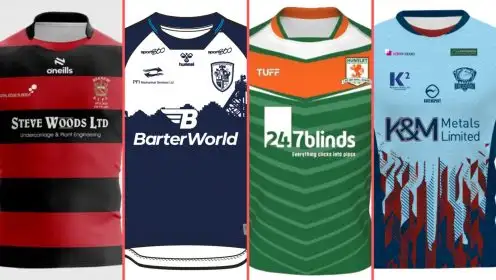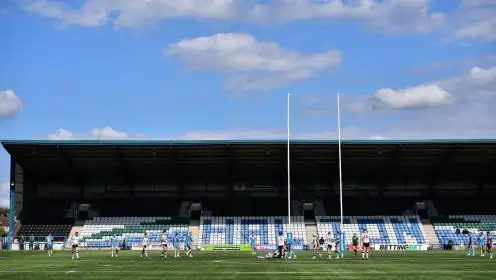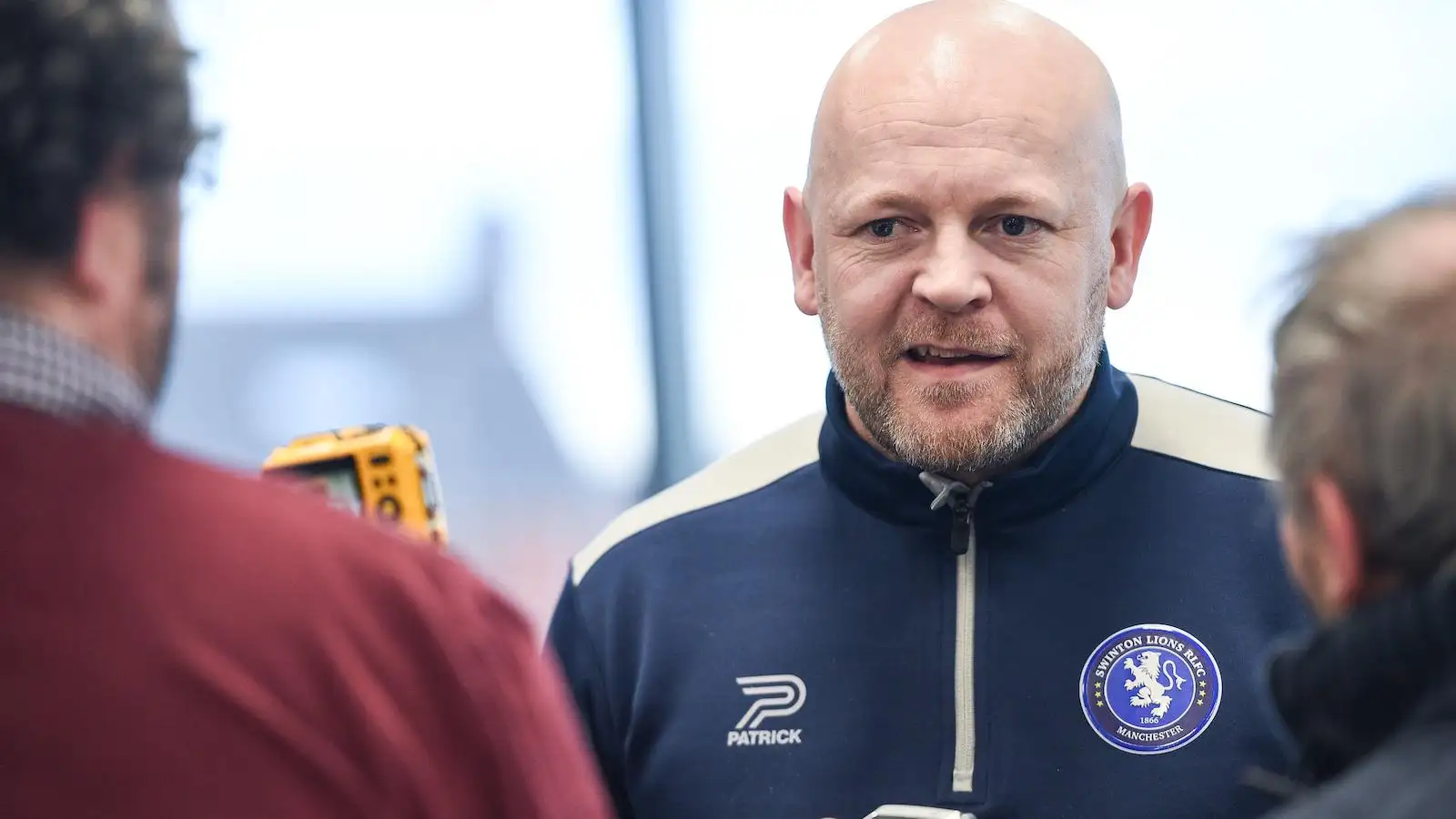Throwback Thursday: 11 years since the first Super League licensing announcement
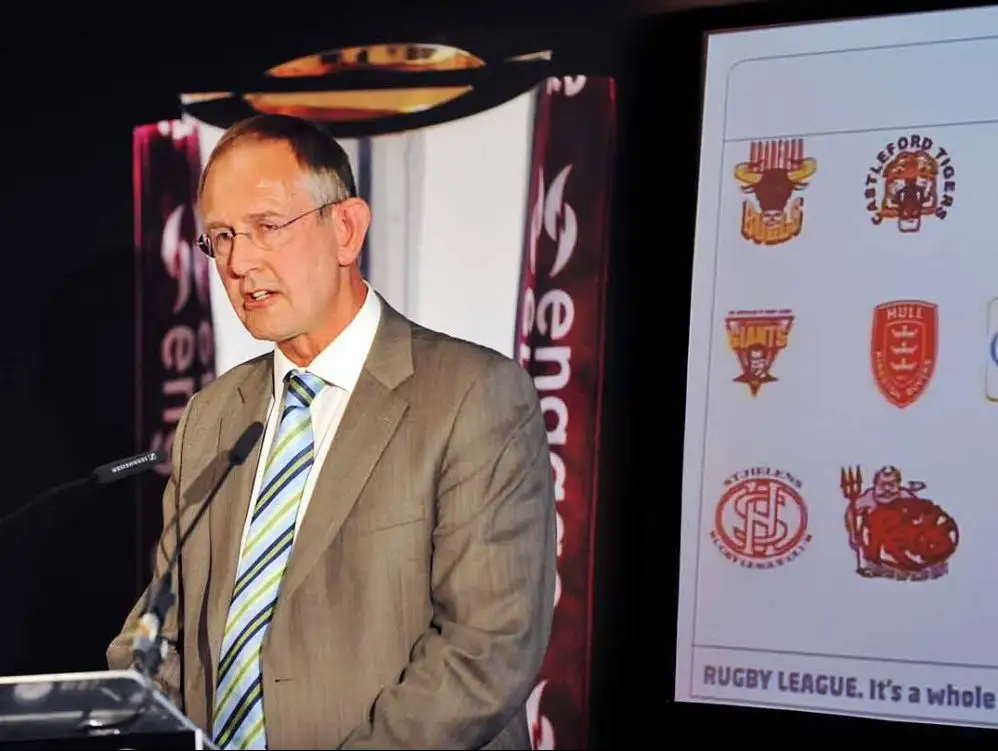
This week marks 11 years since the first Super League licensing announcement, that saw Salford and Celtic Crusaders elevated to the top flight.
Announced in 2005, the licensing system was brought in by the RFL to make Super League a closed shop.
Clubs were awarded a licence grade depending on a number of criteria – facilities, attendances, finances, player strength, salary cap and geographical expansion.
On July 22 2018, chairman of the RFL Richard Lewis announced the 14 clubs awarded a licence, which included all 12 existing Super League clubs, despite concern that some did not meet the relevant criteria.
A licence clubs: Hull, Leeds, Warrington
B licence clubs: Bradford, St Helens, Wigan
C licence clubs: Castleford, Celtic Crusaders, Catalans, Harlequins, Hull KR, Huddersfield, Salford, Wakefield.
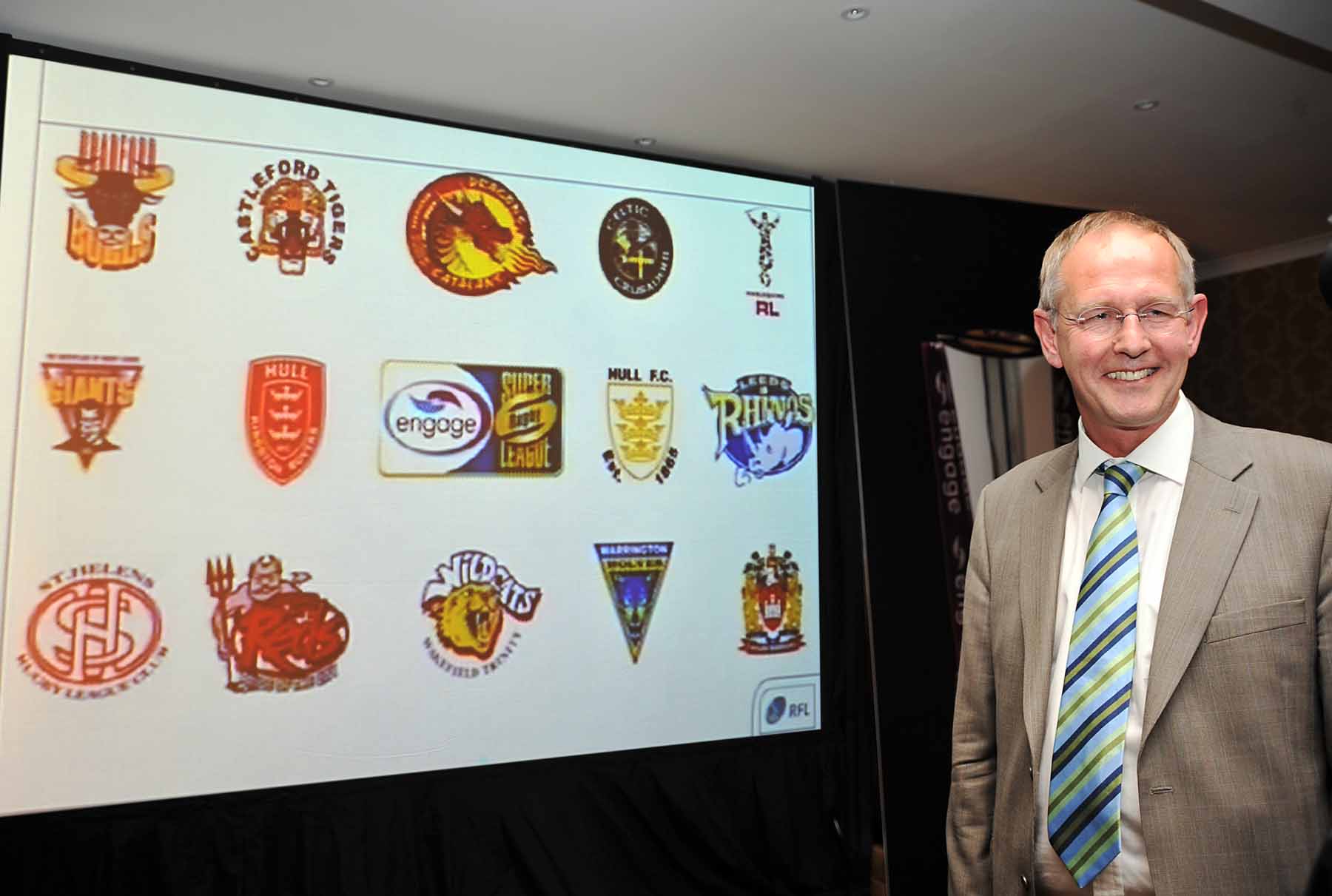
The decision was blasted by some clubs, not least Leigh, who’s chief executive Allan Rowley was scathing in his assessment.
He said: “May we take this opportunity to wish Salford and Celtic all the best but we also have to say we are thoroughly disgusted with the Celtic decision.
“We now have a team that fielded 10 overseas players against us because they are classed as a development team and are now in our elite competition, which is a complete contradiction of terms and we feel this decision is purely a geographical one…the decision makers should hang their heads in shame.”
Widnes also missed out, having been in administration the previous year, though their owner Steve O’Connor took the decision with grace.
O’Connor said: “We must build on the solid foundations we have laid down over the past eight months and plan for the future. I feel it is vital for the game as a whole that the Super League flourishes under this new licence system and I’m still convinced that Widnes Vikings have all the credentials to become a powerful force in Super League.”
A year after the announcement, the RFL wrote to Castleford, Celtic Crusaders, Salford, St Helens and Wakefield to remind them that their Super League futures were in jeopardy if they didn’t improve their stadium facilities.
The summary of the successful applications was given as below:
The 14 licensed clubs have been announced by the RFL. Below is a summary of each club’s application.
SUPER LEAGUE LICENCE ANNOUNCEMENT 2009-2011
SUMMARY OF APPLICATIONS
BRADFORD BULLS
The Coral Stand offers good hospitality but the remainder of the stadium requires improvement and there are some development plans. The club has historic and projected profits and operates without the need for shareholder support. The club is known for its game day experience and has positive brand alignment to national partners. Attendances are not as high as in previous seasons, however the club remains one of the most well supported. Excellent Super League results over the years are backed by a strong playing department, although the club appears to have a slight overseas reliance.
CATALANS DRAGONS
Gilbert Brutus represents a sound functional stadium with further investment planned over the next 12 months. Although there are differences in the formalised game day operations between the countries, the match day experience is positive for supporters. The financial information regarding projections was not as detailed as it could have been and the club has been reliant on shareholder input. A Challenge Cup Final appearance helped the financial position and further capital injection is planned. As was anticipated, the club’s crowds and merchandising have improved considerably over the three year period from a low base before the introduction into Super League. The commercial plan appears reasonable but would have benefited from further evidence. On the playing side, the first team are producing good results and are introducing more French trained players. The club needs to advance its fledgling youth development processes. Commercial success and increased player pool prove that the introduction of a French club into Super League has been vindicated.
CASTLEFORD TIGERS
Whilst well maintained, the ground is limited and old fashioned. However, the club recognise this and has relatively advanced plans for a new stadium. Financial projections are based on the new ground, although there is evidence of a Plan B. The club is well managed financially with limited external borrowings and/or shareholder funds. The club has produced a holistic commercial plan, has a record of commercial achievement and achieves strong support even when relegated. The club’s reasonable playing infrastructure has been hurt by the yo-yo-ing between Super League and National League. The club has maintained youth pathways but has not always been able to secure the best local talent.
CELTIC CRUSADERS
Whilst well maintained, the ground is limited and old fashioned but there is a commitment to immediately enhance the current facilities. In the medium term the club recognises the need to develop a new facility and appears to be working with the local public agencies to deliver this. As with any new venture, financial projections are more subjective but the club has demonstrated financial stability during its progress through the National Leagues. The club has built good relationships with commercial partners and TV channel S4C offers exciting opportunities. There is supportive independent market research for Super League in South Wales, although inevitably this can only be fully tested by the club’s actual participation in the competition. The playing infrastructure is very good in places but the club is understandably at the early stages with its scholarship and academy teams.
FEATHERSTONE ROVERS
Whilst the stadium is well maintained and of a good standard for the National Leagues it would require further investment to achieve Super League minimum standards. The club’s finances appear stable from the information provided. The club has a good community programme and has secured some positive and creative media coverage in the last year. However, the club faces competition for crowds from current Super League clubs within the area. The assessment of the club’s playing strength would have been enhanced by the submission of further evidence. There is a player pathway framework but this would require further investment before it would be considered to be of Super League standard.
HALIFAX RLFC
The club has previously made a good contribution to Super League but is significantly restrained by the incomplete nature of their stadium. This makes financial projections and marketing plans difficult to produce with any degree of certainty. Player development structures would require further investment before they could be considered of a Super League standard. However the club’s first team performances are consistently at the higher end of National League 1 over recent seasons.
HARLEQUINS RL
The Stoop provides good facilities across the board. The club relies on significant shareholder support and is seeking additional investment. Crowds have fluctuated and the club is looking to increase attendances on the back of stability in a good stadium. The recently appointed new management is tapping into a large catchment area and making the most of a robust community programme. The club has been reasonably successful in Super League and has a well resourced playing department. There are emerging local players but the club’s juniors are not yet regularly attracting national honours.
HUDDERSFIELD GIANTS
The stadium is an excellent 13 year old facility despite the absence of some facilities that a new build might have. The club has a dependency on shareholder support and will need to deliver on a strong commercial plan to achieve the projected increases in turnover and profitability. Attendances have improved significantly since a Challenge Cup Final appearance and with the recruitment of key commercial and marketing staff. The club has invested in the first team and will need to ensure that scholarship and academy structures are sufficient to produce Club Trained players.
HULL FC
The club plays in an excellent stadium and has high attendances. The club is well organised in all areas of marketing – particularly its community and Customer Relationship Management programmes – and is commercially strong. The club has historic and projected profits and operates with little external financial input. Despite a recent dip in playing form this season the club achieves high marks in most areas of playing strength.
HULL KINGSTON ROVERS
This is the club’s second year in Super League and it is showing strong potential. The club has invested significantly in improving its facilities, much of which is behind the scenes. Further significant developments are planned. This commendable investment has required, and will continue to require, strong financial management. The club’s commercial plan is well thought through and logical and its community work is achieving results. The assessment of the club’s player performance strategy would have been enhanced by the submission of further evidence, particularly with Academy Reserves but there is a growing infrastructure since promotion to Super League.
LEEDS RHINOS
An example of an older stadium that has had significant improvements, with more planned. The club has historic and projected profits and strong net assets. Commercially the club has produced good results and they achieve high attendances. The club’s playing record speaks for itself and the club is producing quality Club Trained players.
LEIGH CENTURIONS
The new stadium is close to opening. Inspection of the current site, together with a review of the current plans, suggests that it will be an excellent facility. The new stadium provides the basis on which the club might develop into a strong candidate for Super League by developing its existing structures in a number of areas. Recruitment will need to take place to help deliver the good, reasoned commercial plan. The club has strong historic and predicted shareholder reliance. Evidence was provided of investment in youth production, which would require further strengthening to achieve Super League standards.
SALFORD CITY REDS
Whilst well maintained, the ground is limited and old fashioned. However, the club recognise this and has relatively advanced plans for a new stadium and are on site. The Willows offers good corporate facilities and disabled facilities. Despite previous relegations from Super League the club has a long history of financial stability. The club’s commercial and marketing plans appear well developed and will allow them to make use of a new stadium and access to the Salford and Manchester conurbations. The club’s player performance strategy is very diligent in every area and there is a strong infrastructure although the club currently struggle with under 16 player development.
ST HELENS
The ground is an old and tired stadium. However, a new stadium is planned and has recently secured planning permission. The club’s financial position and commercial activities are constrained by the current stadium. Financial plans are based around a new facility. The club is a market leader in merchandise. On the playing side, the club has a strong infrastructure and again are market leaders in junior production.
TOULOUSE OLYMPIQUE
The club would offer geographic expansion and independent market research shows some support for Super League in Toulouse. Despite the club’s commendable commitment to player production there is a concern that it has a limited supply of Super League standard player talent in the area. The club has established strong business links and is well placed for commercial development, although the club would need to work hard to meet its financial projections. The application proposed using two quality facilities whilst the club’s own ground was being redeveloped.
WAKEFIELD TRINITY WILDCATS
Whilst well maintained, the ground is limited and old fashioned. However, the club recognise this and have plans for a new stadium. These are not as far advanced as might be the case despite projected occupation by 2010 and evidence of a Plan B would have been beneficial. There is good progress within community development and attendances are improving. Evidence of specific commercial measurable targets with the commercial strategy would have assisted. There has been a recent improvement on the pitch and increased investment in the playing department. Youth development works reasonably well and pre-16 players are attracting national honours but the club has not always been able to retain the best local talent.
WARRINGTON WOLVES
The club plays in a quality new stadium which in all but one or two aspects is excellent. Further ground improvements are planned and although financial projections are challenging, the club has a good record in this area. The club has strong sponsorship packages and a good commercial plan. The club has performed reasonably well in Super League and has invested well in its playing infrastructure and now needs to start contesting major finals and semi-finals. At this stage it is not yet developing Club Trained internationals.
WIDNES VIKINGS
The stadium is an appropriate size and well appointed following significant investment in recent years. The club has been in the difficult position of seeking to take into account the club’s historical attendance and playing records but naturally distancing itself from the previous regime’s financial record. The current company has only been in existence for a few months following insolvency in October 2007. Early indications are that under new ownership the club has made very good progress so far and has attracted good sponsors and the support of the local authority. The club has maintained a reasonable playing infrastructure despite being in the National League but this would require further investment to ensure that they could be competitive in Super League particularly within Club Trained rules.
WIGAN WARRIORS
The club is playing in an excellent stadium and attracts good attendances. There is currently some reliance on the new majority shareholder. The club has strong commercial plans and is a market leader in many aspects of marketing and commercial activity. The club has had what it will view as disappointing Super League results in recent seasons and now seems to be making use of its excellent playing infrastructure. The club achieves national honours at scholarship level and has expressed commitment to converting more into the first team squad.
